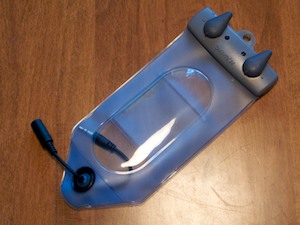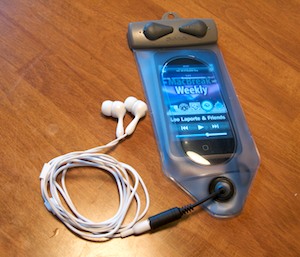If you have an OpenID identity (and you probably do, or could get one easily) you can now use that to post comments on Status-Q if you’d rather not create a separate login here.
Chiroquacktic
Simon Singh has been doing a good job of highlighting the bogus claims of homeopathy and chiropractic. Now it seems likely to cost him a lot of money because of the nature of the British libel system.
Fortunately, he has quite a lot of money and seems willing to go down fighting. But it doesn’t seem fair.
Read the story so far…
Bing
Readers will know that I’m usually very dismissive of Microsoft, but I have to give them credit where it’s due, and my (very brief) experiments with their new search engine, Bing, suggest that it does rather a good job. As good as Google, possibly, despite the joke that the name stands for ‘But It’s Not Google’.
A friend of mine who works for Microsoft once complained to me about the amount of time he has to spend on his employer’s ‘misguided attempts to keep playing catch-up with Google’. Well, I think with Bing they may have come pretty close. The problem is that it’s taken too long, and it’ll need to be rather better than Google now to get people to break their existing habits.
One thing that would help would be if they paid lots of money to the Mozilla Foundation, as Google do, to make it the default engine in the Firefox search window. But given the company’s history, that would have to be pretty painful!
Still, no doubt it’ll be the default for IE users. I’ve met quite a few of our customers recently who, because of their employer’s policies, are forced to use IE at work. At least having a decent default search engine will make it a bit less painful.
On the reading of old books
C.S. Lewis once wrote an essay entitled On the Reading of Old Books, in which he argued, if memory serves, that there are far too many books published each year for anybody to even contemplate reading them, so a pretty good way of thinning them out is to pick ones that have stood the test of time.
Since coming across this in my youth, I’ve tried, very roughly, to read one book published before my lifetime for every one I read that was written during my lifetime. This still leaves me heavily biased towards the present, of course, but it does go some way towards correcting my natural reading tendencies. I guess we’ve probably reached the time, for people of my age or younger, when it would be a good rule to apply to movies as well.
Lewis could have added another benefit of old books: that they’re generally out of copyright and so freely available on places like Project Gutenberg, so can be read on your iPhone using Stanza. It’s funny that he neglected to mention that.
Take Jerome K. Jerome, for example. Everyone knows Three Men in a Boat. But I also rather like his Idle Thoughts of an Idle Fellow and was browsing it over a decidedly idle breakfast this morning. What a great blogger he would have been! Here’s an extract, to take you for a moment back to 1886:
Continue reading »
The rise of the postal code
Thought for the day:
I wish I had patented the concept of a postcode. Or had shares in a company that had.
In the last few years, the postcode has gone from being the least useful part of an address (for anyone except the post office) to the most useful. It’s pleasing, in a way, that something designed to aid postal delivery was more of a chore than a benefit for the average person posting a letter, but then became incredibly useful in the age of SatNav and Google Maps!
Friendly fire
Now, there’s nice phrase I hadn’t heard before: someone on the Today programme said that it would be bad for the Labour Party to form “a circular firing squad”.
Voice of reason
I’m sorry, gentle reader, but I feel a rant coming on…
I wish to complain about the misguided fools who try to create those blasted customer support lines which use automatic voice recognition. May your share prices collapse and your banks be forced into public ownership!!
I don’t believe I have a very unusual voice for a native English speaker, but I often get recognition rates worse than 50% when asked simple things like, “Please answer yes or no.”
Me: Yes.
Phone: I’m sorry, I didn’t understand that. Please answer yes or no.
Me (trying to speak calmly and naturally because I suspect the machine will just become bloody-minded if I get impatient): Yes.
Phone: I’m sorry, I didn’t understand that. Please answer yes or no.
Me: Argghh! Go stick your head in a pig!
Phone: I’m sorry, I didn’t understand that. Please answer yes, or press 1, or answer no or press 2.
Me: Thank God! (pressing 1)
Now tell me who, in their right mind, could think that this might conceivably be better than just pressing ‘1’?
I know what happened. Some idiot in the marketing department (who never has to use their system) persuaded management that their company would look much cooler, and that they’d have a lot more happy customers, if said customers could only get through to a support person by having a cheery conversation with a machine while they’re driving down the motorway and are unable to press a button on their phones. (As if a system that has such problems on my landline could conceivably work on a mobile in the first place).
They weren’t bright enough to realise that said customer would die horribly in a crash because their judgement would be impaired by the incredible frustration brought on by the machine, or would unleash their wrath on the poor attendant at the next petrol station and be arrested, and then how would they pay you their 40 quid a month subscription, eh, that’s what I’d like to know?!
Do these systems actually work for anyone else? Is it just me? Am I in need of elocution lessons? Please say or click ‘Add comment’…
Parental transport responsibilities
You know how people say (when their kids reach a certain age) that they’re just taxi drivers now?
It could be worse. They could actually be the taxi!
I had great fun with my friends Martin, Hilary and Eddie today in my… ahem… two-man canoe…
Regular readers will no doubt be amused that four days after writing proudly about my iPod-waterproofing system, I bent a little too far forward while standing on a pier and my phone, which of course wasn’t in such an enclosure, slipped out of my shirt pocket.
So I ended up doing a little swimming in the Great Ouse that I hadn’t really planned, and it was actually most refreshing. For me. I haven’t yet dared ask the phone how it feels…
Homecoming

I know you’ll be pretty amazed by my artistic ability, as demonstrated here. When your pulse has stopped racing, you can look at this little Quicktime movie to see how I did it.
This was my first experiment with the Brushes app for the iPhone/iTouch, which would be little more than a toy if it weren’t for the sort of things real artists are managing to do with it. This guy‘s getting a lot of attention.
Thanks to John for the initial link.
A bit nebulous?
Not your average panorama – this beautiful image is from NASA’s Astronomy Picture of the Day site. It’s the Carina Nebula, and you can click it to find out more.
Water Music
I love swimming but have to admit that, when done as an exercise, it’s not always the most riveting occupation. So my latest gadget is an attempt to remedy that.

It’s an Aquapac case for an MP3 player, and when combined with an iPod and some waterproof headphones…

…it should allow me to listen to lectures from Cornell while ploughing up and down, thus enriching both body and mind. Prepare for some energetic and terribly erudite posts after the weekend!
(If you don’t notice any change, I probably listened to Britney Spears instead.)
Climbing the world’s tallest trees
Most of us love climbing trees when we’re young, and I was no exception. How come I never realised one could do it as a job?
There’s an excellent TED talk by Richard Preston which will change the way you think of trees, or the way your kids think of them, in about 20 mins…
You can subscribe to the TED talks on iTunes if you want a really easy way to get them…
© Copyright Quentin Stafford-Fraser



Recent Comments